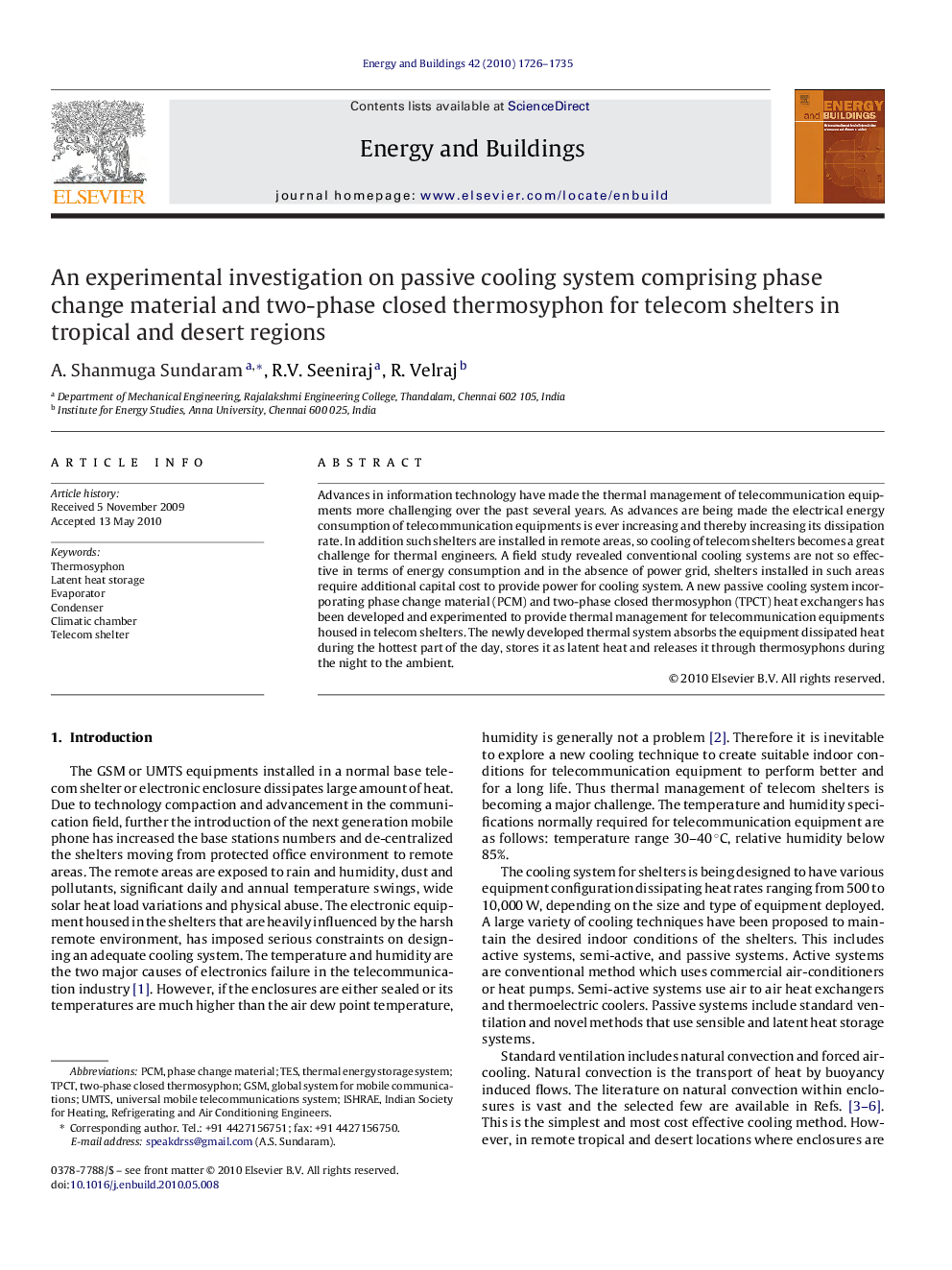| Article ID | Journal | Published Year | Pages | File Type |
|---|---|---|---|---|
| 264597 | Energy and Buildings | 2010 | 10 Pages |
Advances in information technology have made the thermal management of telecommunication equipments more challenging over the past several years. As advances are being made the electrical energy consumption of telecommunication equipments is ever increasing and thereby increasing its dissipation rate. In addition such shelters are installed in remote areas, so cooling of telecom shelters becomes a great challenge for thermal engineers. A field study revealed conventional cooling systems are not so effective in terms of energy consumption and in the absence of power grid, shelters installed in such areas require additional capital cost to provide power for cooling system. A new passive cooling system incorporating phase change material (PCM) and two-phase closed thermosyphon (TPCT) heat exchangers has been developed and experimented to provide thermal management for telecommunication equipments housed in telecom shelters. The newly developed thermal system absorbs the equipment dissipated heat during the hottest part of the day, stores it as latent heat and releases it through thermosyphons during the night to the ambient.
